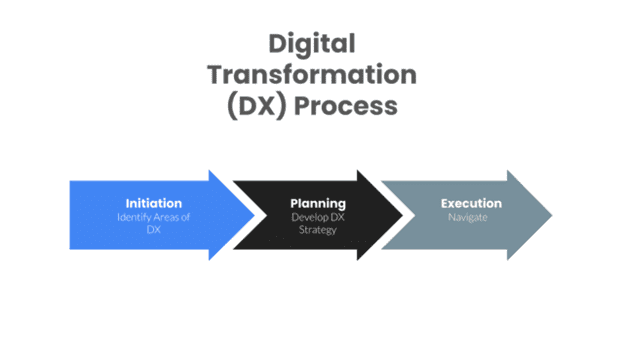Today’s digital landscape is steadily evolving. The same could be said for business. Let’s call business, inputs and processes, and technology tools. Inputs are the resources, processes are the steps taken, and tools are the instruments used to perform the steps required to produce an output. In short, inputs and processes (business) work in tandem with tools(technology) to produce outputs. And just as inputs and processes must be refined over time, so must the tools. What does this mean for the business? Adapt, or risk creating an inferior product. Digital transformation sounds daunting, but it does not have to be. Below are three high level steps to help get the ball rolling.
First, identify areas in the business that might benefit from digital transformation.
A big area of concern that we see as consultants is customer experience. How does the customer interact with the business? What are their first impressions? Do they experience any pain points? Is the website fast enough? Does the website offer enough product information to reduce the amount of necessary human interaction with the customer? Another area of potential digital transformation is operational efficiency. What processes can be automated? What are the pain points in our processes? One key indicator of process inefficiency are frequent and unproductive meetings.
Second, develop a tailored digital transformation roadmap that aligns with the goals and challenges set forth in step one.
To do this, one needs to identify specific actions needed in order to achieve the objective, set deadlines and milestones for each initiative, allocate resources, and monitor and adjust the strategy continuously until the strategy has been fully implemented.
Third, navigate implementation challenges.
Some implementation challenges include: resistance to change, lack of resources, and technological limitations. To combat resistance to change, consider involving employees in the implementation process. Ask them for inputs and feedback throughout the implementation process. To address lack of resources, consider prioritizing initiatives that would make the largest impact on one’s organizational effectiveness. To mitigate technological limitations, consider upgrading outdated systems. These are a few of many implementation challenges, to list them all would turn this short read into a novel. Again, the purpose of this article is to get the juices flowing.
Digital transformation is not complex in its most simple form. Yes, there are many parts, but broken down into smaller workable plans, a digital transformation strategy is not only doable, it opens opportunities that would otherwise be left unseen. The output? A business built to thrive in the digital age. Our firm has a well defined vision for what digital transformation should be. Our purpose is to forge digital transformation strategies to stand the test of time and to form lifelong partnerships with the companies we do business with. Share your thoughts on digital transformation in the comments below!

